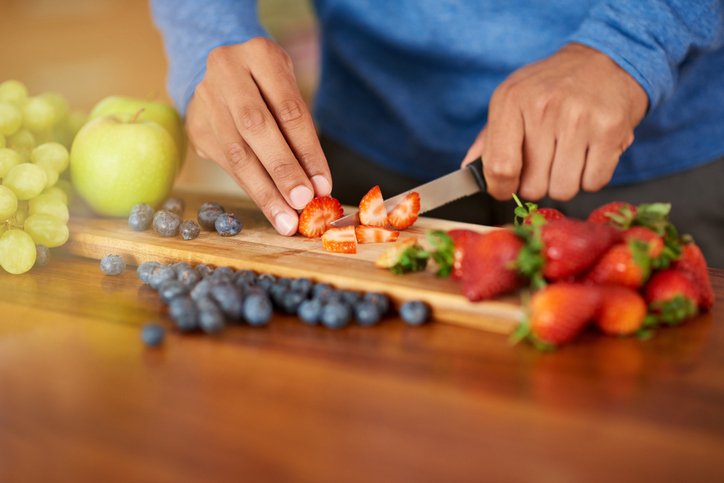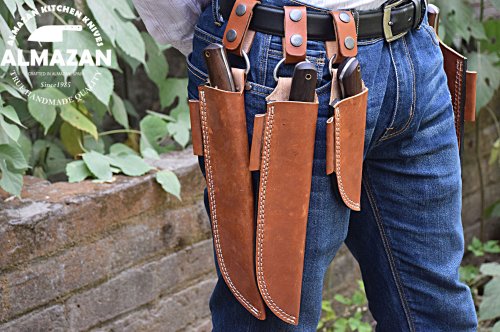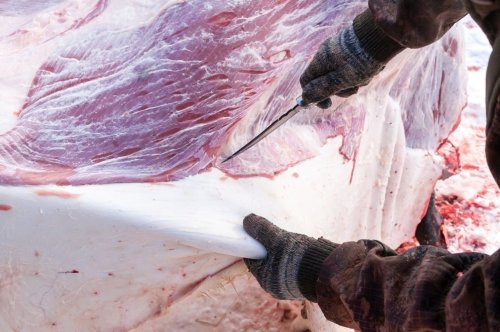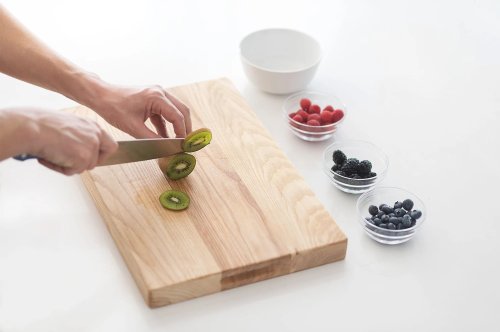HOW TO USE KNIVES SAFELY

HOW TO USE KNIVES SAFELY
General Knife Safety Tips:
- Secure your chopping board.
A damp cloth underneath will stop your board from slipping.
- Never wave a knife in the air.
- Keep your knives clean.
It’s important to stay all of your kitchen equipment clean, but it’s imperative together with your knives. If a knife handle is oily or greasy, stop immediately and clean it. You want a secure grip at all times.
- Create a flat surface on your ingredient before cutting it.
If the ingredient being chopped is round or uneven, like an onion, slice a touch off and make a flat, stable surface to get on the board while cutting. Always chop flat-side down!
- Take your time.
Never chop quickly - work slowly and steadily. Take the time to get to know the knife. Remember practice makes perfect.
- Don’t leave your knives lying around.
When you’ve finished using your knife, clean it and put it away immediately or a minimum put it where others can see it. Whatever you are doing, don’t leave it in a sink filled with soapy water where someone risks cutting themselves.
- Sharpen your knives.
It may sound strange but a blunt knife can do more damage than a sharp one. You’re more likely to use greater force and the dull blade risks slipping off.8. Always hold a knife in your dominant hand.
Use your knife with your writing hand.
KNIFE TECHNIQUES
Okay, let’s get to the pointy end of this knife safety guide, good technique. There are three main knife techniques, the bridge, the claw, and the cross chop.
- The Bridge
If you want to cut ingredients into smaller, more manageable pieces… take it to the bridge!
Form a bridge over the ingredient with your hand, making sure the arch is nice and high so there’s plenty of room for the knife to fit underneath. Hold the item securely with your fingers on one side and your thumb on the other.
Now pick up the knife with the other hand and guide the knife under the middle of the bridge.
Cut into the middle of the ingredient by pressing down and sliding the knife back towards you out of the bridge. Then take one half at a time and place them flat-side down. Repeat the bridge over each half one at a time and cut into quarters. Keep going until you’ve got the number of pieces you need.
Never rush! It’s important to take your time and stop between each slice to check your fingers are out of the way.
- The Claw
The claw technique is used to slice ingredients into strips
Place the item onto the board, flat-side down. Make a claw by partly curling your fingers close together, ensuring you tuck your fingertips and thumb out of the way.
Pick up the knife together with your other hand, check the blade is facing down, and place your claw on top of the ingredient, together with your fingers facing the knife. Keep the tip of the knife on the board and slowly slice into the item, sliding the knife back towards you.
To make your next slice, move your fingers back along with the item, keeping your fingers together and keeping an edge on the highest. Remember, stop between slices to see where your knife is and confirm your fingers are tucked out of the way.3. Cross Chop
The cross-chop technique is used to finely chop vegetables or herbs.
To begin, cut your vegetable or herb into rough pieces, using the techniques above.
Hold the knife firmly in one hand, and place the tip of the knife on the board at an angle of roughly 20 degrees.
Keep the fingers of your other hand rigid on the highest fringe of the lower half of the blade. Keeping the tip of the knife on the board, raise and lower the handle of the knife sort of a guillotine, so it chops whatever is thereunder.






